4 full supermoons in a row in 2023
According to astrophysicist Fred Espenak – formerly at the Goddard Space Flight Center and best known for his work on eclipse predictions – the full moon on the American overnight of July 2-3, 2023, is the first in a series of four full supermoons in a row.
Watch on or about these dates:
July 2-3 overnight
August 1 morning or evening
August 30-31 overnight
September 28-29 overnight
Note: The dates above are most suited to the Americas, Europe and Africa. Elsewhere in the world – depending on where you live – some supermoons might fall on slightly different dates. Watch for the full moon around all of these dates!
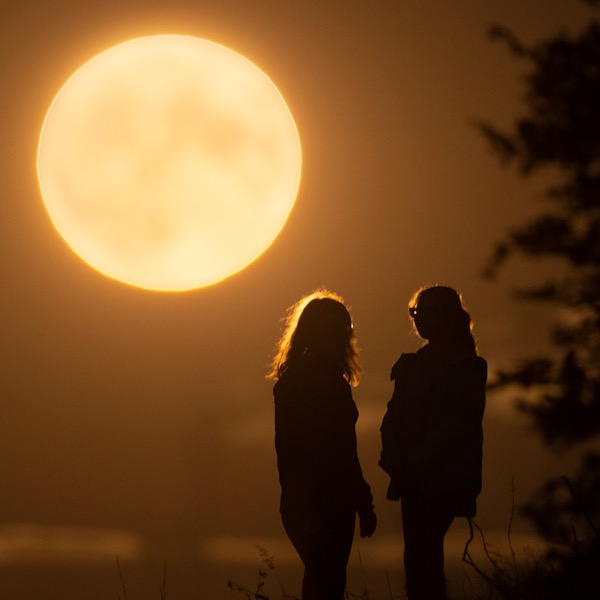
What are supermoons?
A full moon happens when the moon (in its monthly orbit) is on the opposite side of Earth from the sun. A full supermoon happens when the full moon happens at – or near – the time the moon is closest to us in its elliptical orbit. Fred Espenak’s full supermoon table provides dates and distances for full supermoons in 2023. Contrast these moon distances to the average moon distance of 238,900 miles (384,472 km).
July 2-3: 224,895 miles (361,934 km)
August 1: 222,158 miles (357,530 km)
August 30-31: 222,043 miles (357,344 km)
September 28-29: 224,658 miles (361,552 km)
By the way, 2024 will have four full supermoons in a row as well. They are August 19, September 18, October 17 and November 15.
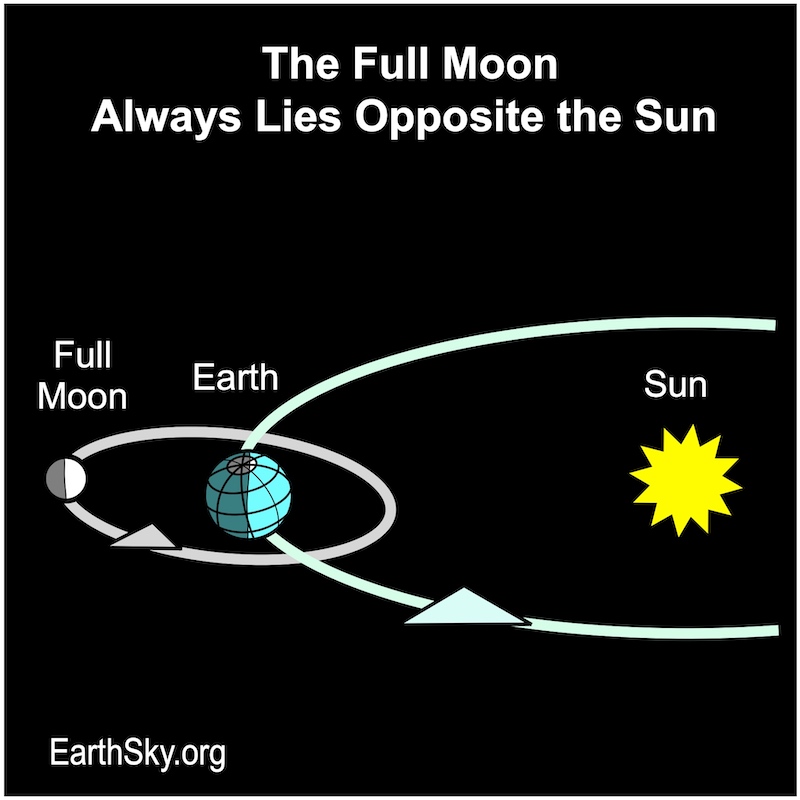
What are full supermoons?
It was the astrologer Richard Nolle who coined the term supermoon in 1979. He defines a supermoon as:
a new or full moon which occurs with the moon at or near (within 90% of) its closest approach to Earth in a given orbit.
However, different websites calculate supermoons differently. EarthSky uses supermoon dates as determined by astronomer Fred Espenak. Additionally, his method of calculating supermoons takes into account changes in the moon’s orbit during each lunar cycle.
Of course, full supermoons draw a lot of attention and are very popular.
But … do supermoons look brighter than ordinary full moons? Yes! By a noticeable amount. That’s because a supermoon exceeds the disk size of an average-sized moon by up to 8% and the brightness of an average-sized full moon by some 16%. And then, it exceeds the disk size of a micromoon (a year’s most distant and therefore smallest full moon) up to 14% and the brightness of a micromoon by some 30%. So, go outside on the night of a full supermoon. Even if you’re a casual observer of the moon, there’s a chance you’ll notice the supermoon is exceptionally bright!
By the way, before the term supermoon caught on, we in astronomy called these moons perigean full moons, or perigean new moons. No doubt about it, supermoon is catchier.
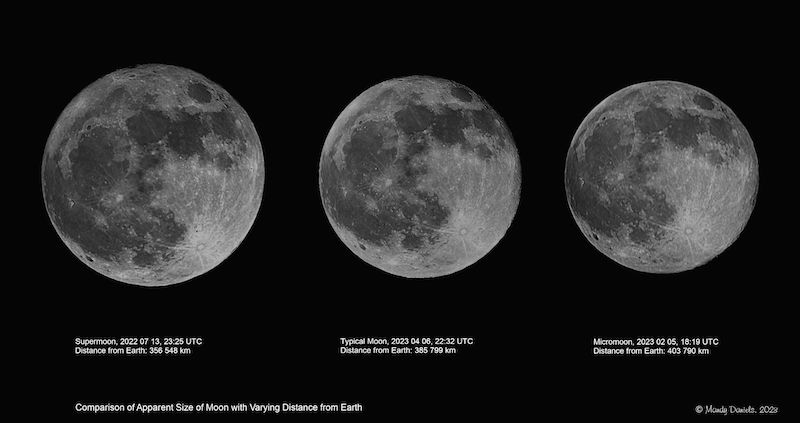
The exceptionally close August 2023 full supermoon
The supermoon of August 30-31, 2023, will be the closest full supermoon this year when it is 222,043 miles (357,344 km) from Earth. And it’s also a monthly Blue Moon. In astronomy, a blue moon is the second full moon in a calendar month. By the way, the next monthly Blue Moon is not until May 31, 2026. And the next time we’ll have a closer full supermoon is November 5, 2025, when the moon lies 221,817 miles (356,980 km) from Earth.
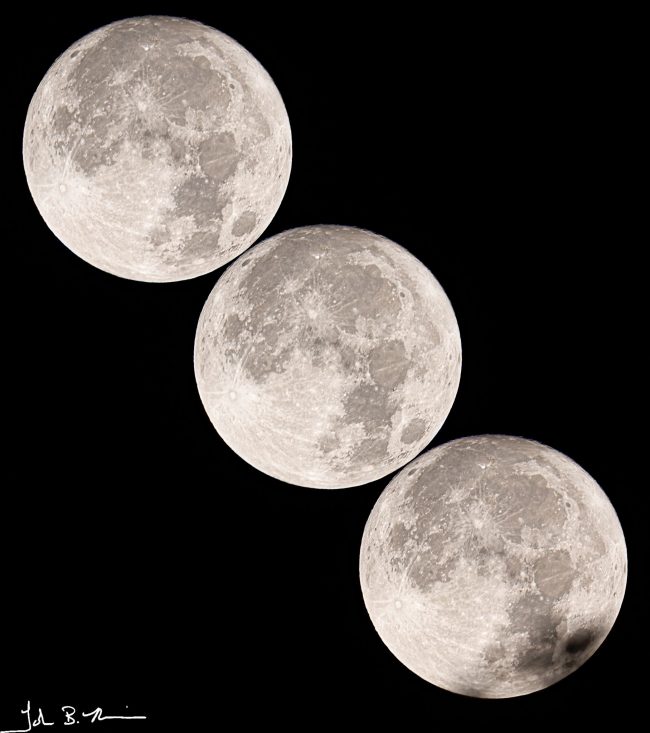
Earth’s oceans feel supermoons
At new moon or full moon, the sun, Earth and moon align in space. The gravitational pull on Earth’s oceans is always greatest at such times. These are the spring tides, the highest (and lowest) tides coming twice each month (in contrast to the neap tides, when the variation between high and low tide is at its least, which happen around first and last quarter moon).
A new or full moon at perigee accentuates the spring tides. It creates what some call king tides, or exceptionally high tides, which are noticeable to those living along coastlines.
So, people living along the ocean shorelines might notice the variation in high and low tides for the coming months, around the dates of full moon.
One way or another, supermoons have an impact, even if it’s just enjoying the sight of a bright moon!
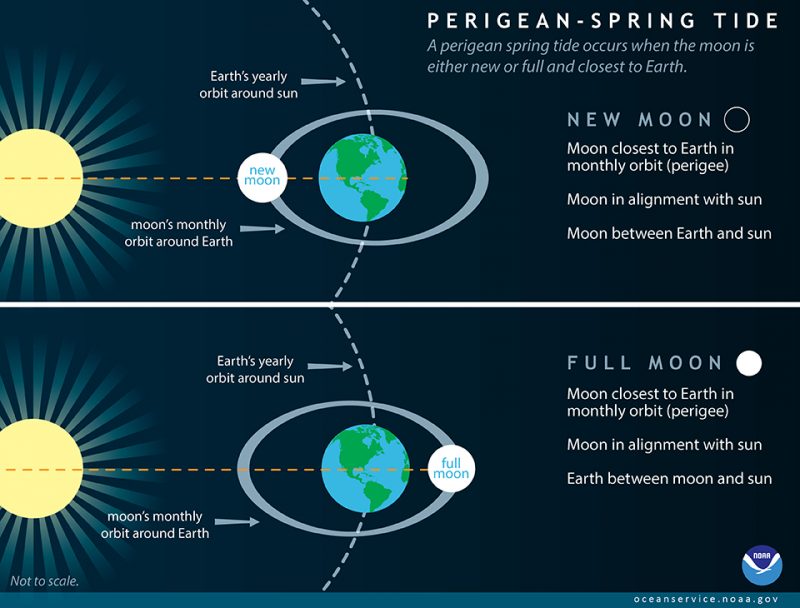
Bottom line: We’ll have four full supermoons in a row in 2023. The first is overnight on July 2-3. The closest – also a Blue Moon – will be August 30-31.
Via AstroPixels: Moon at perigee and apogee: 2001 to 2100 and AstroPixels: Phases of the moon: 2001 to 2100
Read more: Four keys to understanding moon phases
The post 4 full supermoons in a row in 2023! 1st on July 2-3 first appeared on EarthSky.
0 Commentaires